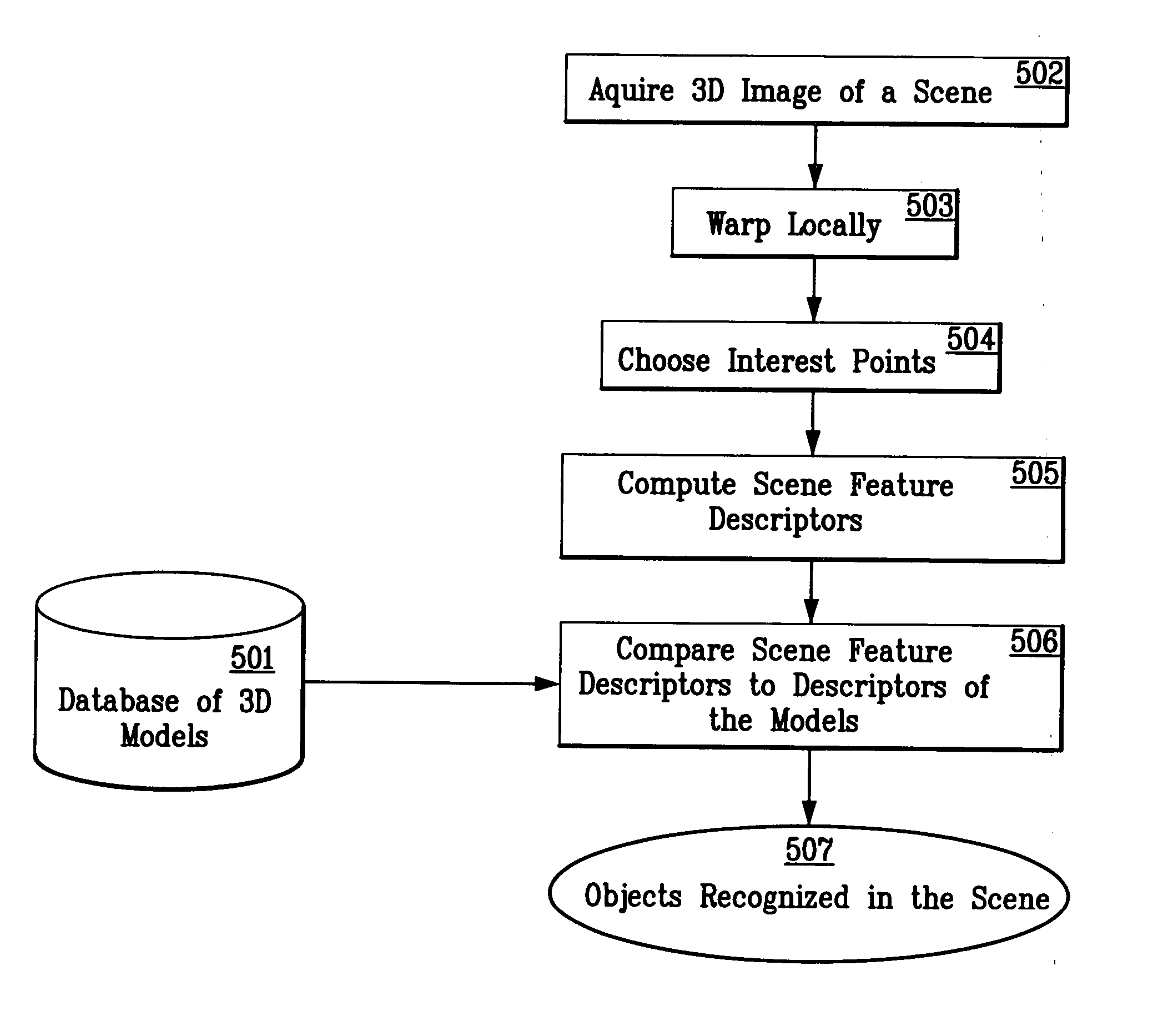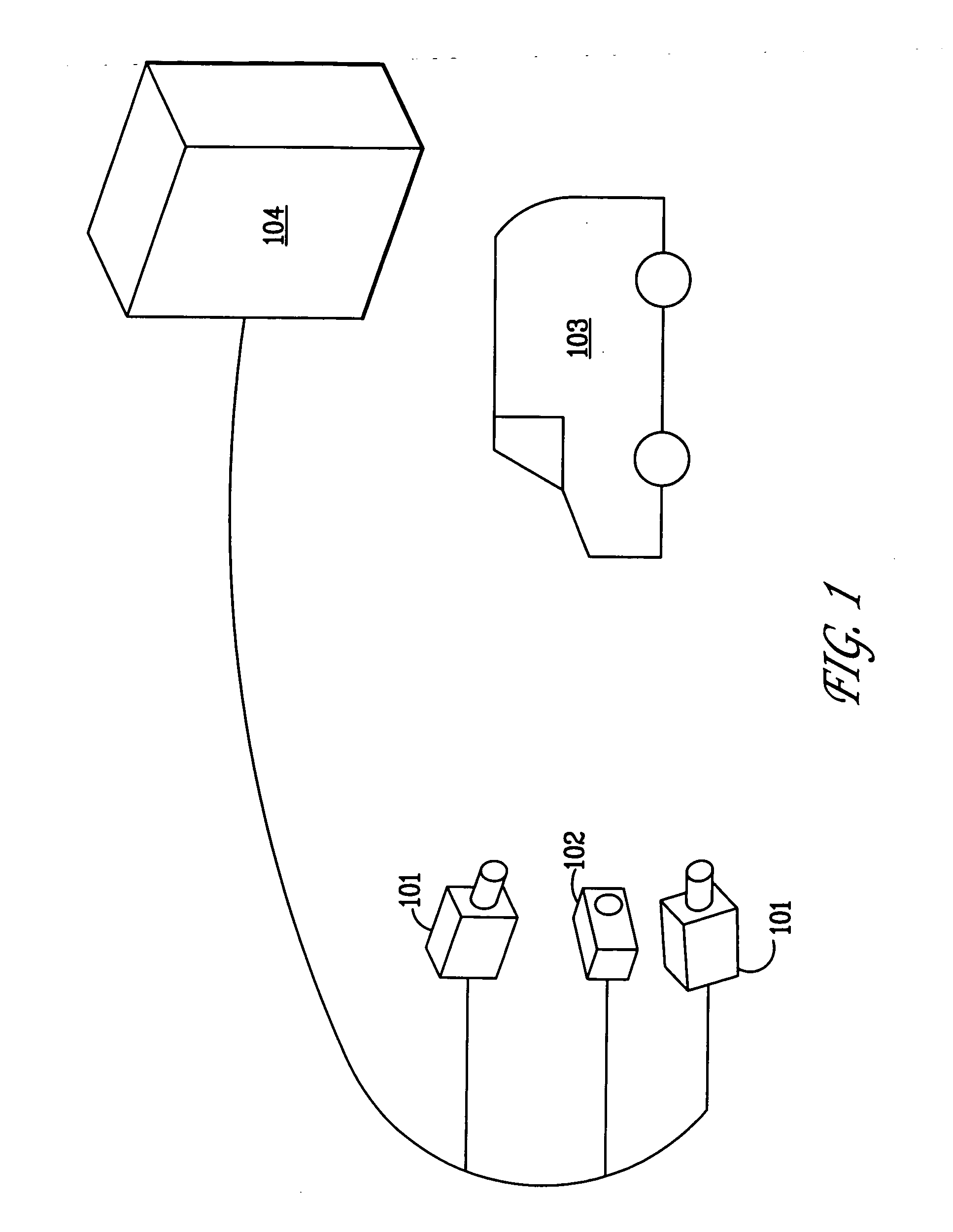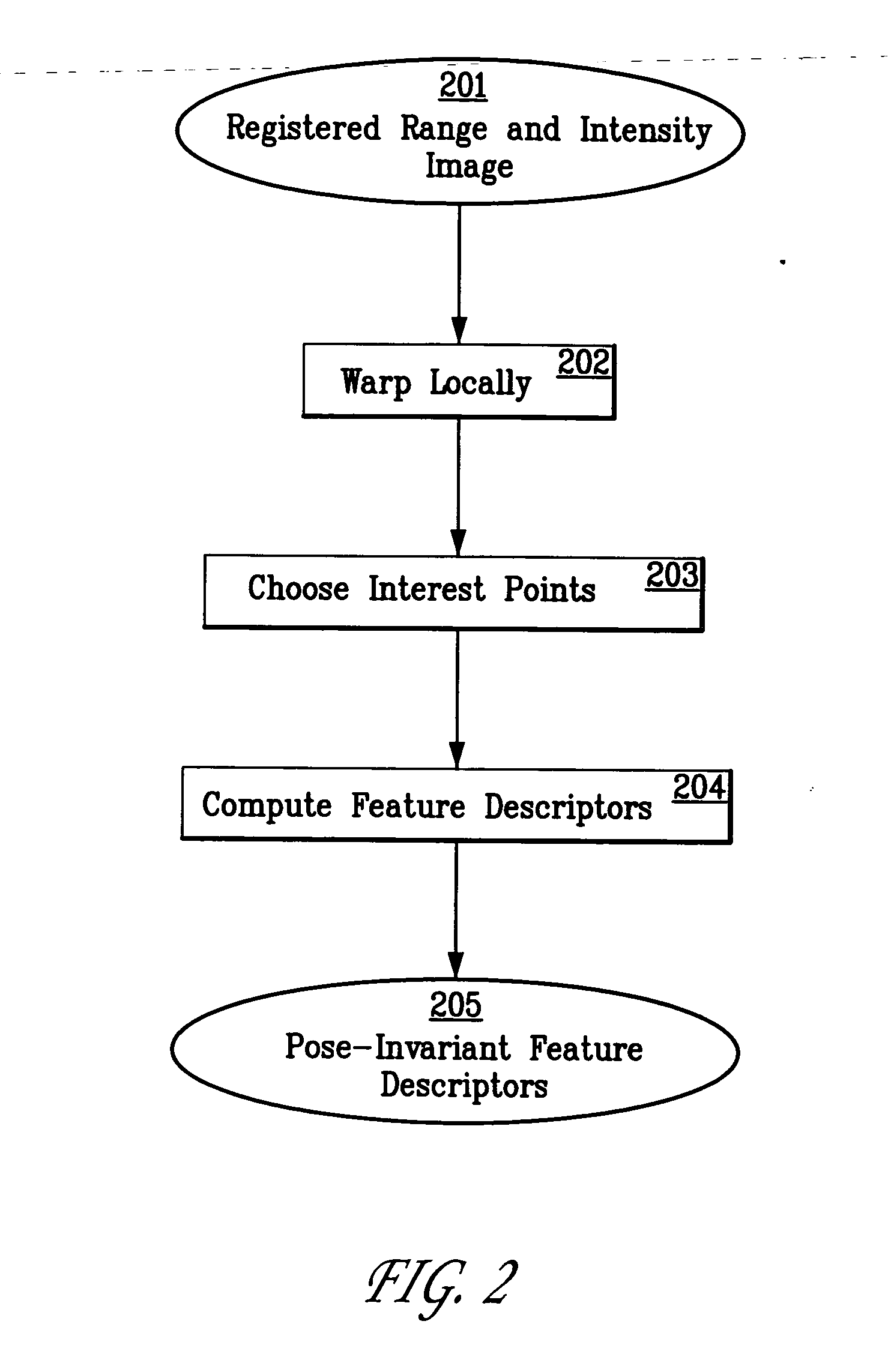System and method for 3D object recognition using range and intensity
a technology of range and intensity, applied in the field of computer vision, can solve the problems of not being able to solve the problems of not being able to recognize a very wide variety of objects or classes from a wide variety of viewpoints and distances, and manifold difficulties in object recognition
- Summary
- Abstract
- Description
- Claims
- Application Information
AI Technical Summary
Benefits of technology
Problems solved by technology
Method used
Image
Examples
first embodiment
[0097] The first embodiment is concerned with recognizing objects. This first embodiment is described in two parts: (1) database construction and (2) recognition.
Database Construction
[0098]FIG. 3 is a symbolic diagram showing the principal components of database construction. For each object to be recognized, several views of the object are obtained under controlled conditions. The scene contains a single foreground object 302 on a horizontal planar surface 306 at a known height. The background is a simple collection of planar surfaces of known pose with uniform color and texture. An imaging system 301 acquires registered range and intensity images.
[0099] For each view of the object, registered range and intensity images are acquired, frontally warped patches are computed, interest points are located, and a feature descriptor is computed for each interest point. In this way, each view of an object has associated with it a set of features of the form where X is the 3D pose of th...
second embodiment
[0119] The second embodiment modifies the operation of the first embodiment to perform class-based object recognition. There are other embodiments of this invention that perform class-based recognition and several of these are discussed in the alternative embodiments.
[0120] By convention, a class is a set of objects that are grouped together under a single label. For example, several distinct chairs belong to the class of chairs, or many distinct coffee mugs comprise the class of coffee mugs. Class-based recognition offers many advantages over distinct object recognition. For example, a newly encountered coffee mug can be recognized as such even though it has not been seen previously. Likewise, properties of the coffee mug class (e.g. the presence and use of the handle) can be immediately transferred to every new instance of coffee mug.
[0121] The second embodiment is described in two parts: database construction and object recognition.
Database Construction
[0122] The second embo...
PUM
 Login to View More
Login to View More Abstract
Description
Claims
Application Information
 Login to View More
Login to View More - R&D
- Intellectual Property
- Life Sciences
- Materials
- Tech Scout
- Unparalleled Data Quality
- Higher Quality Content
- 60% Fewer Hallucinations
Browse by: Latest US Patents, China's latest patents, Technical Efficacy Thesaurus, Application Domain, Technology Topic, Popular Technical Reports.
© 2025 PatSnap. All rights reserved.Legal|Privacy policy|Modern Slavery Act Transparency Statement|Sitemap|About US| Contact US: help@patsnap.com



